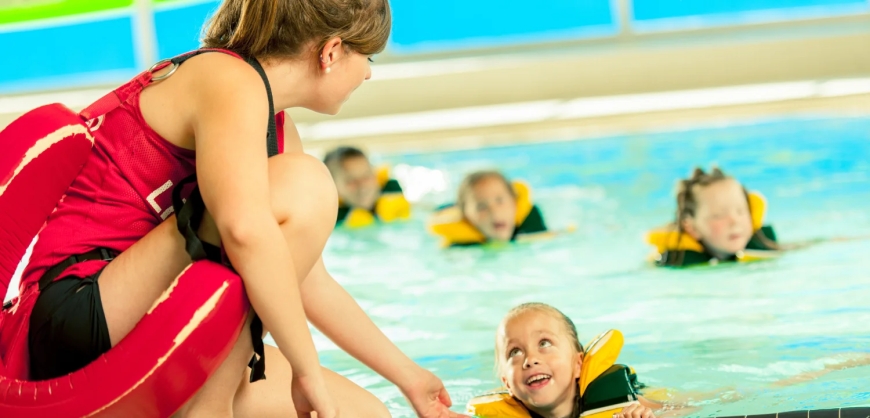Lifeguard Training Schedules That Actually Work: Realistic Daily Plans from Certified Instructors
In this article, we’ll break down daily training plans crafted by certified instructors, designed to help you master the skills and stamina needed to succeed.

Becoming a lifeguard requires more than just knowing how to swim its a blend of physical readiness, emergency response skills, situational awareness, and mental endurance. But one common issue many aspiring lifeguards face is finding a training schedule thats realistic, sustainable, and effective.
In this article, well break down daily training plans crafted by certified instructors, designed to help you master the skills and stamina needed to succeed. Whether youre a beginner preparing for certification or a returning lifeguard working on recertification, these schedules will help you stay consistent and make real progress.
Why Structured Schedules Matter in Lifeguard Training
Too often, people dive into lifeguard training with scattered workouts and irregular practice. A structured daily plan does three things:
-
Builds Physical Endurance Gradually
-
Reinforces Muscle Memory for Rescues
-
Reduces the Risk of Burnout or Injury
Certified instructors emphasize that training schedules should balance intensity, recovery, and variety to simulate real-life lifeguard demands.
Key Components of an Effective Lifeguard Training Plan
Before we dive into daily schedules, understand the essential categories every lifeguard program should include:
-
Cardiovascular Conditioning For long-duration swims and sprints.
-
Strength Training Especially upper body and core for rescues.
-
Rescue Skills Practice Including dummy carries, spinal board drills, and underwater retrievals.
-
CPR & First Aid Review At least weekly practice.
-
Scenario Simulations Role-playing real emergencies to boost confidence.
-
Rest & Recovery Active rest and muscle repair days to avoid overtraining.
Sample Daily Lifeguard Training Schedules
Here are three instructor-approved weekly plans, tailored to different experience levels.
? Beginner Lifeguard: 5-Day Training Schedule
Goal: Build endurance, basic rescue skills, and swim form.
Day 1: Swim & Skills
-
500m warm-up swim
-
Treading water (2 mins no hands)
-
Brick retrieval (2 reps)
-
Review basic rescue techniques (30 mins)
Day 2: Strength & First Aid
-
Core workout (planks, crunches, leg lifts 3 sets)
-
Push-ups (3 sets of 12)
-
CPR and AED practice (30 mins)
-
Bandage and bleeding control (30 mins)
Day 3: Long Swim
-
1000m swim (freestyle and breaststroke)
-
Practice entries (stride jump, compact jump)
-
Floatation rescue drills (20 mins)
Day 4: Rescue Drill Day
-
Partner rescue simulations
-
Passive victim deep-water retrieval
-
Spinal injury backboard drill
-
Post-rescue debrief (mental health check)
Day 5: Active Rest
-
Yoga or light stretching
-
20-minute walk or easy swim
-
First aid knowledge quiz
? Intermediate Lifeguard: 6-Day Performance Plan
Goal: Speed, rescue mastery, multi-victim scenarios.
Day 1: High-Intensity Swim
-
200m warm-up
-
8 x 50m sprints (timed)
-
Underwater brick retrieval (3 reps)
-
Treading water with 10 lb weight (1 min)
Day 2: Strength & Emergency Scenarios
-
Resistance training: shoulders, back, legs
-
Simulated CPR on adult/child/infant mannequins
-
Group spinal management drill
Day 3: Team Drills
-
Partner rescues with time limits
-
Carry and extraction practice
-
Radio communication simulation
Day 4: Endurance Swim
-
1500m continuous swim
-
Entry & approach stroke training
-
Surface dive refinement
Day 5: Knowledge & Reaction Drills
-
Mock tests on emergency protocol
-
Scenario roleplays: missing person, spinal injury, unconscious swimmer
Day 6: Mobility & Breath Control
-
Breath-hold training
-
Light swim focusing on stroke form
-
Flexibility drills
Day 7: Full Rest
? Advanced Lifeguard: Maintenance & Precision Schedule
Goal: Maintain top performance and refine critical response skills.
Day 1: Rescue Scenarios & Endurance Swim
-
Advanced CPR with team
-
Multiple victim rescue simulation
-
2000m mixed stroke swim
Day 2: Technical Rescue Focus
-
Board rescue, boat entry practice
-
Spinal injury extraction in surf or pool
-
AED troubleshooting
Day 3: Open Water or Surf Simulation
-
Navigating currents
-
Long-distance swim
-
High-stress rescue timing
Day 4: Cross-Training
-
Resistance circuits + sprint intervals
-
Aqua jog or underwater drills
-
Stretch and breath recovery
Day 5: First Aid Deep Dive
-
Complex wound care
-
Heat stroke, hypothermia response
-
Evacuation scenario planning
Day 6: Mock Test Day
-
Timed swim and rescue
-
Written protocol test
-
Evaluation feedback
Day 7: Full Rest or Light Swim
Tips from Certified Instructors
-
Track Your Progress: Keep a training log track swim times, drill performance, and confidence levels.
-
Train With Others: If possible, join group training or partner with someone. Real-time feedback sharpens response time.
-
Dont Skip Recovery: Overtraining leads to fatigue and increases injury risk. At least one full rest day per week is essential.
-
Simulate Real Conditions: Train in both pool and open water (if applicable), vary the weather conditions, and wear gear when drilling.
Final Thoughts
Lifeguard training isnt just about passing a certification test its about being ready to save lives under pressure. That readiness comes from smart, structured, and sustainable schedules developed by experienced instructors who understand the physical and mental demands of the role.
Whether you're just starting or looking to elevate your rescue capabilities, adopt a training plan that works with your life, builds confidence over time, and reflects real-world emergencies. Lifeguards don't just train harder they train smarter.







































